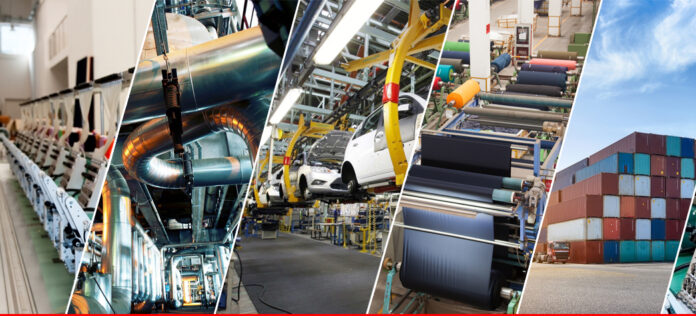ISLAMABAD: Pakistan’s large-scale manufacturing (LSM) output contracted for the seventh month in a row with no sign of revival in the immediate future. The overall output of LSM decreased by 6.48 per cent for July-Oct, 2019-20 compared to July-Oct, 2018-19.
The LSM index shrank by almost 8 per cent (7.9 per cent) year-on-year in the fourth month of 2019-20, the Pakistan Bureau of Statistics (PBS) reported on Wednesday. Meanwhile, during the 4th month of the financial year 2019-20, the big industry fell by 5.8 per cent.
In September the LSM index had decreased by 5.63 per cent year-on-year, while, during the third month of FY20, the big industry fell by 5.91 per cent.
As per the PBS data, the LSMI output decreased by 7.97 per cent for October 2019 compared to October 2018 and increased by 4.01 per cent if compared to September 2019.
In 2018-19, three LSM sectors recorded a decline of 3.64 per cent against the target growth of 8.1 per cent, which the government has set at 3.1 per cent for 2019-20.
The production in Jul-Oct 2019-20 as compared to Jul-Oct 2018-19 has increased in fertilizers and leather products while it has significant decreased in food, beverages, tobacco, coke, petroleum products, pharmaceuticals, automobiles, iron and steel products, and electronics.
The sector showing an increase during the period from July-October, 2019 included textile by 0.18 per cent, leather products 7.74 per cent, electronics 5.51 per cent, engineering products 8.3 per cent, rubber products1.5 per cent, wood products 60.14 per cent, non-metallic products 0.38 per cent, and fertilizers 10.71 per cent respectively.
During July to October, the decrease in LSM was mainly led by a dip of 36.07 per cent in automobiles followed by 14.97 per cent in iron and steel, 13.77 per cent in petroleum products, 8.85 per cent in electronic products, 10.28 per cent in pharmaceuticals, 8.40 per cent in food beverage and tobacco 8.3 per cent in chemicals, 6.19 per cent in petroleum products and 14.97 per cent in iron and steel products, respectively.
During the four months’ period sector-wise, production data of 11 items under the oil companies advisory committee registered decrease of 0.77 per cent whereas 36 items under the Ministry of Industries and Production shrank by 4.89 per cent and 65 items by 2.30 per cent.
The lacklustre performance in the industrial sector reflects overall economic slowdown across various sectors in the on-going fiscal year. LSM constitutes 80 per cent of manufacturing and 10.7 per cent of the overall Gross Domestic Product (GDP). In comparison, small-scale manufacturing accounts for just 1.8 per cent of GDP and 13.7 per cent in manufacturing.
Data reveal various factors that led to the slowdown including lower Public Sector Development Programme (PSDP) expenditures compared to last year, deceleration in the private construction activities and consumer spending on durable goods.
Automobile prices witnessed multiple upward revisions due to currency depreciation, which kept potential buyers at bay. On a yearly basis, the sector registered sales decline in almost all variants during the second month of this fiscal year.
According to sources in the industry, the local investors are concerned on the inaction of the government in facilitating industries that are barely surviving, as the advantage of the curb in imports is being offset by continued smuggling and under-invoicing.
Most of the local industries instead of creating new employment opportunities are downsizing their workforce. A proper evaluation of the situation would reveal that the industries are paying higher taxes on declining productivity. The sales are slowing down due to lack of demand. However, even then the industries are forced to increase rates due to cost-push inflation. The central bank is stubbornly keeping interest rates high to attract ‘hot money’ while the local businessmen cannot afford to operate on high mark-up loans. Most of the increase in revenues has come because of high inflation, high rupee depreciation and an increase in tax rates on compliant sectors.
According to Dr Hafiz A Pasha, presently overall, over 90 per cent of the large-scale manufacturing sector is showing either near-zero or negative growth. Some industries have seen big double-digit decreases in production. This includes a fall of 34 per cent in the automobile industry, 14 per cent in petroleum products, 17 per cent in iron and steel products and 12 per cent in pharmaceuticals.
























